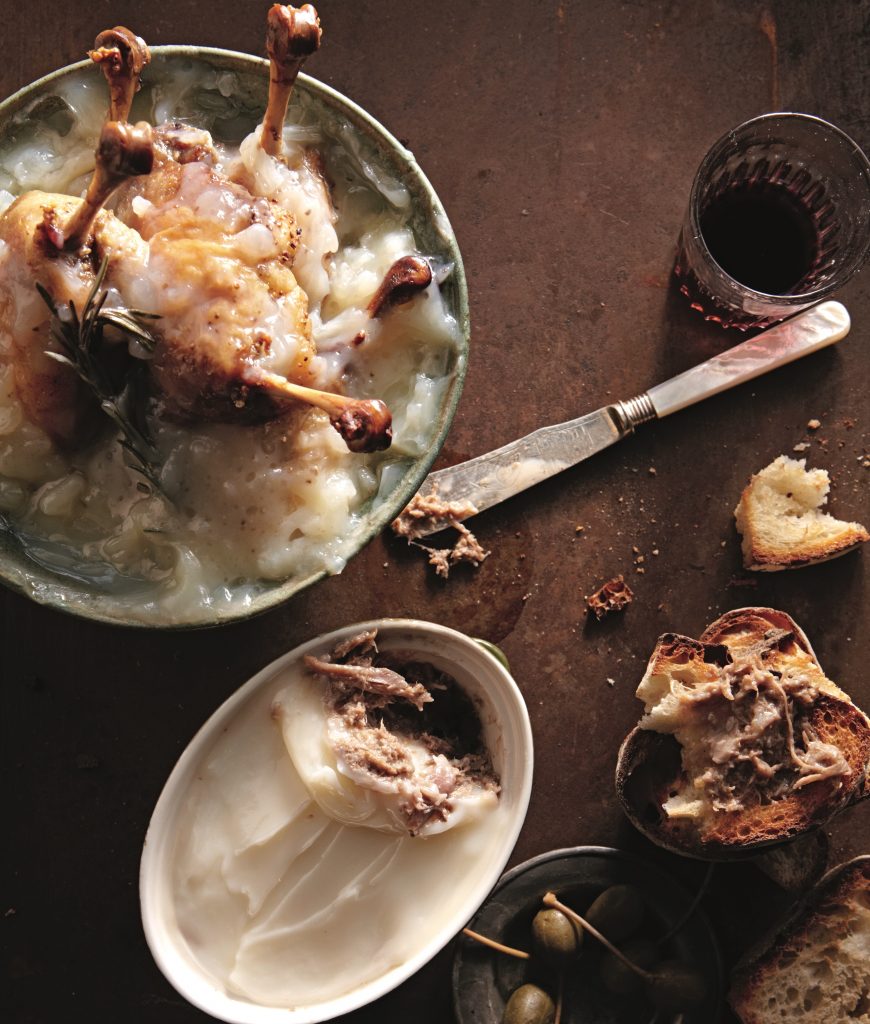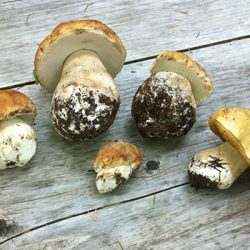Travel around the Loire Valley, and it’s a certainty that you’ll encounter rillettes, a spread made from meat slow-cooked in its own fat until it softens and falls apart. The tradition of making Rillettes de Tours focuses on pork. In Le Mans, it’s pork and goose. Duck rillettes are another Loire specialty, one you can find at Buvette, in New York City’s West Village. Chef Jody Williams serves her duck rillettes in a small pot topped with prunes, offering toasted country bread and cornichons on the side. Williams shares a version of the recipe in her cookbook Buvette: The Pleasure of Good Food, which we’ve adapted here if you want to make rillettes at home. First, prepare the duck confit and the spice mix, then finish the rillettes. Match Buvette’s duck rillettes with one of the cabernet francs in our Loire tasting report for a rich and delicious pairing. —David Paradela


Excerpted from Buvette: The Pleasures of Good Food by Jody Williams. Copyright © 2014 by Jody Williams. Photo Credits to Diane Luger. Reprinted with permission of Grand Central Publishing. All rights reserved.
Cooked and preserved in its own fat, duck confit is one of the most elegant examples of the intersection of decadence, simplicity, and economy. It’s an essential component of cassoulet and also makes a wonderful meal. It is especially good alongside a hearty side dish.
Pâté spice is a combination of spices essential for both duck rillettes and pâté de campagne. Even if you don’t make either of those dishes often, the spice mixture can be stirred into hot milk with honey for a variation on masala chai, or incorporated into roast meats, cake batters, or anything else that would welcome the warming flavors. —Jody Williams
Ingredients
Duck Confit
Makes 2 duck legs; easily multiplied
- 3 tbsp. coarse salt
- 2 tsp. very finely chopped fresh rosemary
- 2 tsp. coarsely ground fennel seeds
- 2 duck legs thigh attached
- 1 cup duck fat or extra-virgin olive oil
- 3 garlic cloves no need to even peel them
- 2 shallots no need to even peel them
Pâté Spice
Makes 2 tablespoons spice mix; easily multiplied
- 1 tsp. ground cloves
- 1 tsp. freshly-grated nutmeg
- 1 tsp. dried ginger
- 1 tsp. ground coriander
- 2 tsp. ground cinnamon
Instructions
Duck Confit
- In a small bowl, stir together the salt, rosemary and fennel seeds. Rub the mixture all over the duck legs; place them in a sealable bag and refrigerate overnight.
- Preheat the oven to 325°F.Remove the duck legs from the bag and brush off the salt mixture.
- Place the duck legs, fat, garlic and shallots into a large, heavy pot or roasting pan. Cover tightly with a lid or aluminum foil and roast in the oven until the meat is tender and the fat has significantly rendered, about 2 hours. Let the duck cool to room temperature. It can sit, covered in all that fat, in the refrigerator for up to a month.
- When you’re ready to eat the duck, remove it from the fat and either broil it on a rack set on a sheet pan until the skin is crisp, or brown and crisp it in a pan on the stovetop. You can also remove the skin from the duck confit, take the meat off of the bone, discard the bones, and warm the meat in a pan or in the oven before serving.
Pâté Spice
- Stir everything together and store in a sealed jar in a cool dark place.
Turning duck confit into duck rillettes
- In a small pot, warm the duck fat covering the confit.
- Break all of the meat and skin off the bones and discard the bones.
- Very finely (extremely finely) chop the meat and the skin, then place in a bowl. Mash in the garlic and shallots that were softened during the confit, being sure to discard their skins. Add a healthy pinch of pâté spice (recipe above) and saturate the meat with warm duck fat.
- Keep stirring the mixture as it cools so that everything is evenly emulsified. As it cools, the duck fat will solidify and the rillettes will become thick and spreadable.
- Pack the mixture into small ramekins or into a large crock. Pour a little duck fat over the top to seal the rillettes. Store the rillettes in the refrigerator for up to two weeks. Serve with toasted country bread, cornichons and olives.
This recipe is published as part of our Regional Tasting Report on the Loire Valley.
This is a W&S web exclusive. Get access to all of our feature stories by signing up today.

















